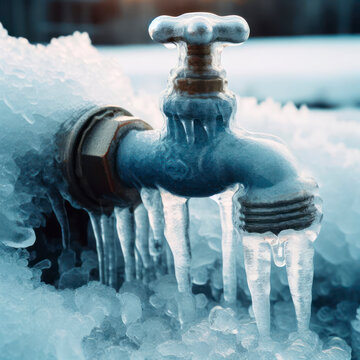Preventing Frozen Plumbing: Top Strategies for Cold Weather
Preventing Frozen Plumbing: Top Strategies for Cold Weather
Blog Article
Everybody has their unique assumption in relation to How To Avoid Freezing Pipes.

Winter can wreak havoc on your plumbing, specifically by freezing pipes. Here's just how to avoid it from taking place and what to do if it does.
Introduction
As temperature levels drop, the threat of frozen pipelines rises, potentially bring about costly repair work and water damages. Understanding exactly how to prevent frozen pipelines is crucial for house owners in cool climates.
Prevention Tips
Protecting at risk pipelines
Wrap pipelines in insulation sleeves or make use of warmth tape to protect them from freezing temperatures. Focus on pipes in unheated or outside areas of the home.
Home heating techniques
Maintain indoor rooms adequately heated up, particularly locations with plumbing. Open cupboard doors to allow warm air to circulate around pipelines under sinks.
Just how to determine icy pipes
Search for decreased water flow from faucets, unusual smells or noises from pipelines, and noticeable frost on subjected pipelines.
Long-Term Solutions
Architectural modifications
Think about rerouting pipes far from exterior wall surfaces or unheated locations. Add added insulation to attics, cellars, and crawl spaces.
Updating insulation
Invest in premium insulation for pipelines, attics, and wall surfaces. Proper insulation helps keep regular temperatures and lowers the danger of frozen pipelines.
Securing Outdoor Pipes
Yard hoses and exterior faucets
Disconnect and drain yard hoses before winter months. Install frost-proof spigots or cover outside taps with shielded caps.
Understanding Icy Pipes
What triggers pipes to freeze?
Pipes ice up when revealed to temperature levels below 32 ° F (0 ° C) for extended periods. As water inside the pipes freezes, it expands, taxing the pipeline wall surfaces and possibly triggering them to rupture.
Dangers and damages
Frozen pipes can result in water system disruptions, residential property damages, and pricey repair services. Ruptured pipes can flood homes and create considerable architectural damages.
Indicators of Frozen Pipeline
Identifying icy pipelines early can prevent them from bursting.
What to Do If Your Pipelines Freeze
Immediate activities to take
If you suspect frozen pipelines, keep taps open up to relieve stress as the ice thaws. Make use of a hairdryer or towels soaked in hot water to thaw pipes gradually.
Final thought
Preventing icy pipes needs proactive actions and quick feedbacks. By understanding the reasons, signs, and preventive measures, homeowners can safeguard their pipes throughout cold weather.
6 Proven Ways to Prevent Frozen Pipes and Protect Your Home
Disconnect and Drain Garden Hoses
Before winter arrives, start by disconnecting your garden hoses and draining any remaining water. Close the shut-off valves that supply outdoor hose bibs and leave the outdoor faucet open to allow any residual water to drain. For extra protection, consider using faucet covers throughout the colder months. It’s also important to drain water from any sprinkler supply lines following the manufacturer’s directions.
Insulate Exposed Pipes
Insulating your pipes is an effective way to prevent freezing. Pipe insulation is readily available at home improvement stores and is relatively inexpensive. Pay close attention to pipes in unheated areas such as the attic, basement, crawl spaces, or garage. Apply foam insulation generously to create a buffer against the cold. You can also wrap your pipes in heat tape or thermostat-controlled heat cables for added warmth.
Seal Air Leaks
Inspect your home for any cracks or openings that could let in cold air. Seal any holes around the piping in interior or exterior walls, as well as the sill plates where your home rests on its foundation. Additionally, make sure to keep your garage door closed unless you’re entering or exiting. Leaving it open creates a significant air leak that can lead to frozen pipes.
Allow Warm Air Circulation
During cold snaps, it’s essential to allow warm air to circulate evenly throughout your home. Leave interior doors ajar to promote better airflow. Open kitchen and bathroom cabinets to help distribute heat consistently around the rooms. If you have small children or pets, be sure to remove any household chemicals or potentially harmful cleaners from open cabinets for safety.
Let Faucets Drip
A small trickle of water can make a big difference in preventing ice formation inside your pipes. When temperatures drop significantly, start a drip of water from all faucets served by exposed pipes. This continuous flow helps prevent the water from freezing. Additionally, running a few faucets slightly can relieve pressure inside the pipes, reducing the chances of a rupture if the water inside does freeze.
https://choateshvac.com/6-proven-ways-to-prevent-frozen-pipes-and-protect-your-home/

We were made aware of that article on How to Prevent Your Pipes From Freezing through an acquaintance on a different web blog. Kindly pause to distribute this article if you enjoyed reading it. We appreciate your readership.
Schedule Service Pickup Report this page